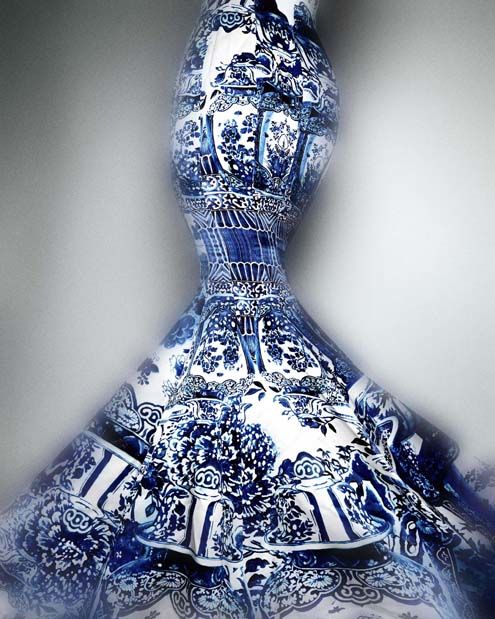Outside, glorious weather beckoned, but more people could be found inside the Metropolitan Museum of Art than in neighboring Central Park, or so it seemed as I craned my neck, stood on tiptoe and otherwise contorted my body so that I might catch a glimpse of the museum’s latest triumph, “China: Through the Looking Glass.”

Spectacular in every which way, the exhibition features 140 costumes, one more enthralling than the next, that reflect the West’s fascination with the East. Even more compelling and visually arresting than the clothes on view were the settings in which they’re positioned -- or, more to the point, staged. Through a series of what the exhibition’s curators call “careful juxtapositions,” several Chanel shirtwaist dresses with a calligraphic print were installed in a gallery whose vitrines held panel after panel of ancient Chinese ideograms. A constellation of stunning blue and white print evening gowns took pride of place amidst a display of the well-known blue and white porcelain that could be found in many 18th century American households.
Elsewhere, red lacquered walls, delicately colored wallpaper flecked with chrysanthemums and a heart-stopping forest of luminous white tubes meant to resemble bamboo (at least I think that was the point) were pressed into service, along with video screens in every conceivable size just about everywhere and background music that intruded rather than receded.
Visitors are duly informed that the exhibition is designed to diminish the distance between East and West, between the “cultural and the simulacrum,” and to inspire “dialogue” as well as “conversation.” That may be, but it was hard, extremely hard, to discern an interpretive through-line as you battled lines, squared off against the ubiquitous taking of selfies and, perhaps most disturbingly of all, visited galleries that were so dimly lit you couldn’t read a thing even if you wanted to.
I suppose that’s the point. Museums these days seem to put more of a premium on sensation than on enlightenment. Visitors aren’t so much engaged or challenged or even moved as barraged. I don’t mean to sound like an old fogy -- I like special effects as well as the next person -- but something’s amiss when, upon exiting, you desperately need a soothing cup of Oolong tea.


